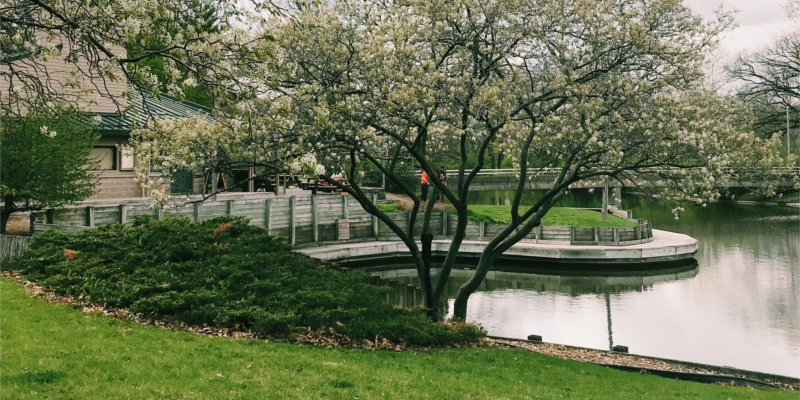The Urbana Park District is attempting to regulate the Crystal Lake goose population in order to address several issues. The intent is not to hold a charity harvest or to get rid of geese because they are “pesky.” These geese are a public health hazard whose population must be reduced, and as a by-product of this effort, the UPD is choosing to donate the geese to the food bank rather than to the landfill.
The goose population is now too high to be in concert with the ecology of the park and is in conflict with the intended uses of the park. These geese are a non-migratory strain, developed in the 1960s to address the Canada goose population’s endangered status brought on by over-hunting. This strain has thrived and has become a “wildlife nuisance” in many parts of its range. And, by remaining in the park year-round, the park’s natural systems don’t get a chance to recover.
A Canada goose poops between one and one and a half pounds per day. With 160 geese, this amounts up to 160 to 240 pounds per day, accounting for roughly 58,000 to 87,000 pounds of goose poop each year. Rain doesn’t eliminate the poop. The rain merely eases the poop’s entry into the ecosystem.
The close sharing of a controlled ecosystem by people and wildlife presents many public health issues. Goose poop is a potential health hazard. It carries disease and parasites, and it creates a fertile substrate for other diseases that humans can get. Plenty of kids, including many young UPD day-campers, use the park, thus putting our children at risk. In the past I frequently attended wonderful summer concerts at Cannonball Hill with concert-goers picnicking and playing on the grass. No longer is this possible. Rolling down Cannonball Hill is akin to going to the grocery store without a mask. You’ll probably survive, but is it worth taking the chance? I wouldn’t chance my kids playing in that grass…would you? Providing children’s and families’ safe use of our parks is one of the highest priorities of the UPD, and I see the present goose population as an opposing force to this priority.
Goose poop is also a contributor to the lake being fouled, although fertilizer in water runoff is also a factor. Fish-kill and algae blooms strongly inhibit our enjoyment of this unique in-town water feature.
Canada geese also have the potential to be seriously territorially-aggressive with the ability to break human bones with their wings. Children are especially vulnerable to these actions.
In the absence of natural predators, this artificially large goose population has outgrown its ability to be an ecologically healthy cohabiter with humans, and, ironically, this is a park-setting where the humans came first. Coyotes are the prime local predators that can successfully prey on geese, but encouraging coyotes would introduce many negative side-effects to this solution.
Relocation is also not an option. Although the UPD has had offers from landowners elsewhere in Illinois to relocate the Crystal Lake Park geese, goose relocation isn’t allowed by the Illinois Department of Natural Resources, presumably because geese tend to return to where they were born.
UPD has tried many solutions to control the goose population, never wanting to resort to the currently pursued action. At open-to-the-public meetings, the staff has consistently kept the UPD Advisory Committee informed and has solicited our input since the beginning. Since these attempts have not been successful, the present strategy seems to be the most effective.
The current strategy is not to remove all of the geese from the park. The goose population is being reduced in the same way that Allerton Park has been known to cull its deer population, and in the same spirit that the reintroduction of wolves to Yellowstone National Park has brought the park back into its sustainable state by managing the elk population. Unfortunately, in the absence of natural predators, humans have to assume the role of controlling the goose numbers if we are to maintain Crystal Lake as a healthy park that fulfills its multi-user purpose.
For those who want to be in the presence of non-migratory geese who don’t have an impact on our children, try 4th Street, a bit south of St. Mary’s Road.
I have confidence that UPD’s policies are consistent with its mission and resources to serve the broad needs of our community. You can find more information and a soon-to-be-posted timeline and rationale for its actions at the UPD website.
Howard Schein is on the Urbana Park District Advisory Committee.








